1. Fantasy Curriculum Management System
1.1. Requirements
1.1.1. Scope/Definition
1.1.1.1. Just Course Catalogue
1.1.1.1.1. Core Data
1.1.1.1.2. Enriched Data
1.1.1.2. Course Delivery?
1.1.1.2.1. Course Selection
1.1.1.3. Big Picture = Big System
1.1.2. Different Audiences
1.1.2.1. Student
1.1.2.1.1. Informed Choices
1.1.2.2. Teachers
1.1.2.3. Employers
1.1.3. Learning Outcomes
1.1.4. Rules
1.1.4.1. Extensions not Exceptions
1.1.5. Lifecycle
1.1.6. Data Entry/Modification
1.1.7. Open Data
1.1.7.1. Persistence
1.1.7.2. Versioning
1.1.7.3. Course Ontology
1.1.8. Workflow
1.1.8.1. Agile
1.1.9. Analytics
1.1.10. Costing
1.1.10.1. Would know how much a course costs!!!!
1.1.10.2. Sensitive data
1.1.10.3. Most difficult area
1.1.10.4. Different pricing for different models (combination/delivery)
1.1.10.4.1. Costs
1.1.10.4.2. Loss leaders
1.1.10.4.3. Price point choices
1.2. Key (System) Players
1.2.1. Student Record System
1.2.2. Timetabling
1.2.3. Room Booking
1.2.4. Finance
1.2.5. VLE
1.2.6. Content Repositories
1.3. Interoperability
1.3.1. Seamless!
2. Strathclyde
2.1. DRIVER: Reorganisation and Reviews
2.1.1. Aspirations
2.1.1.1. Remove steps
2.1.1.2. Remove repetition
2.1.1.3. Single Source Data
2.1.1.4. Simplify Access to Data
2.1.2. Homegrown corporate systems
2.1.2.1. 1 Oracle Database: 4000 tables
2.1.3. Course and Class Approvals
2.1.3.1. Process Modelling
2.1.3.1.1. Information not Data
2.1.3.1.2. Decision Points not Timings or Criteria
2.1.3.1.3. Generalised model
2.1.3.1.4. BPMN
2.2. Architecture and Technologies
2.2.1. Presentation Layer
2.2.1.1. Tools
2.2.1.1.1. Sharepoint UI
2.2.1.1.2. jQuery
2.2.1.1.3. AJAX
2.2.1.1.4. ASP.NET
2.2.1.2. ? Why not a BPEL process platform ?
2.2.2. Service Layer
2.2.2.1. Orchestration
2.2.2.2. Service Interfaces
2.2.2.3. Message Types
2.2.3. Business Layer
2.2.3.1. Domain Model
2.2.3.2. Business Entities
2.2.3.3. Business Workflows
2.2.4. Data Access Layer
2.2.4.1. O/R Mapping
2.2.4.2. Service Agents
2.2.5. Data Stores
2.2.5.1. Tools
2.2.5.1.1. SQL Server
2.2.5.1.2. Sharepoint Lists
2.2.5.1.3. Document Libraries
2.2.5.2. Needed due to limits of Sharepoint
2.3. Data
2.3.1. Data structures not the problem
2.3.2. Making information timely and relevant is
2.4. Corporate v Education
2.4.1. Entrepreneurs
2.4.1.1. Control
2.4.1.1.1. is this subverting then?
2.4.2. Innovators
2.4.2.1. Promote
2.5. Standards/Specifications
2.5.1. Driven by external demands
2.5.2. Poor fit internally
2.5.3. No desire to adopt external models for internal apps
3. MMU
3.1. Barriers
3.1.1. Reasons for Vagueness
3.1.1.1. reasonable behaviour in small units
3.1.2. Change Everything!
3.1.3. Rollover + tinkering
3.2. Not really Sharepoint
3.2.1. Getting the Point of Sharing
3.3. Joined Up Imagination
3.3.1. blend specialist expertise
3.4. Creative Dialogue
3.4.1. scenarios
3.4.2. prototyping
3.4.3. stakeholder walk-through workshops
3.4.4. enterprise architect know how
3.4.4.1. identifiers for integration
3.4.4.2. joining islands
3.5. myMMU
3.5.1. shame corporate systems into developing web services
3.5.2. apis.mmu
3.5.2.1. web service feeds
3.5.3. Sharepoint + Mobile
4. Intro
4.1. Sharepoint
4.1.1. 78% HEIs using
4.1.1.1. document mgt
4.1.1.2. collaboration
4.1.1.3. targeting information
4.1.1.4. improving/automating cross institutional processes
4.1.2. why have a VLE if you have sharepoint?
4.1.2.1. why have sharepoint if you have a standards based, distributed, repository backed VLE?
4.1.2.2. or a standards based process driven web service delivered platform?
4.1.2.2.1. unicorn!
4.1.2.3. so portal v best of breed
4.2. JISC Programmes
4.2.1. curriculum design
4.2.2. DVLE
4.2.3. FSD
4.2.4. XCRI
5. Southampton Learning Environment
5.1. what
5.1.1. central services hub
5.1.1.1. learning
5.1.1.2. teaching
5.1.1.3. living
5.1.1.4. appropriate to university role
5.1.2. vehicle for reviewing and aligning processes
5.1.3. flexible systems
5.1.4. single login
5.2. why
5.2.1. student experience
5.2.2. staff experience
5.2.3. employability
5.2.4. efficiencies
5.2.5. scale
5.2.6. teaching space problem
5.3. architecture
5.3.1. corporate systems
5.3.2. student facing applications
5.3.3. RDF layer (or some form of open data)
5.3.3.1. web services?
5.3.4. portal front
5.3.4.1. Sharepoint
5.4. system groupings
5.4.1. communications
5.4.2. fee payment/records
5.4.3. infrastructure
5.4.4. cloud services
5.4.5. push
5.4.6. resources
5.4.7. learning services
5.5. rich learning environment
5.5.1. personal space
5.5.2. institutional space
5.5.3. support space
5.5.4. social space
5.5.5. good for learning (external resources)
5.6. AGILE development
5.6.1. POCs
5.6.1.1. potential quick wins
5.6.1.2. personalised timetable
5.6.1.3. option selection
5.6.1.4. booking rooms for group work
5.6.1.5. well me what bus I need to get to my lecture on time
5.6.1.6. tutee information and progress
5.6.2. done
5.6.2.1. research portal
5.6.2.1.1. grant bids
5.6.2.1.2. projects
5.6.2.1.3. groups
5.6.2.1.4. academic CV generation
6. Staffordshire
6.1. Problems
6.1.1. Point to Point integrations
6.1.2. Reporting/Business Intelligence
6.1.3. External Examiner Appointment Process
6.2. Development
6.2.1. Agile
6.2.2. Continuous Delivery - not releases
7. My Thoughts
7.1. open data layers vs corporate portals and standardisation
7.1.1. published structures/apis
7.1.2. published guidance on standards
7.1.3. encouraging mashups/portlets/applications
7.1.3.1. institutional app store
7.1.3.2. discouraged by sharepoint usage
7.1.4. authentication/privacy
7.1.4.1. OAuth?
7.2. entrepreneurs vs innovators
7.2.1. standard experience/delivery
7.2.2. channel alliance
7.3. Strategy or Skunkworks?
7.3.1. high level support
7.3.2. enterprise architecture
7.3.3. roadmaps
7.3.4. portals
7.4. Process/Architecture v Facts/Rules
7.4.1. what's the best framework
7.4.2. who is building glossaries and rule repositories?
7.4.2.1. not just processes or architectures
7.4.2.2. not just domain models
7.4.2.3. published apis and data standards
7.4.2.4. taxonomies and ontologies
7.4.3. this is what we need to do
7.4.3.1. not this is how we do it
7.4.4. standardise inputs/outcomes
7.4.4.1. not control the bit in the middle
7.4.5. personas and scenarios
7.4.6. facts then rules then processes
7.4.6.1. information/data
7.4.6.2. decisions/rules
7.4.6.3. process/workflow
7.4.6.4. service connectors
7.5. Architecture v Ecologies
7.5.1. data, services and frameworks
7.5.2. not so much on the structure

